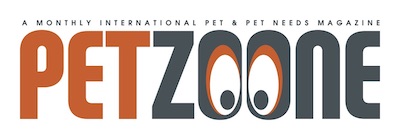The European-based firm was recognised by the American Forest & Paper Association (AF&PA) for a range of packaging that uses fibre-based materials in place of plastic.
The Innovation in Sustainability Award was handed to Ahlstrom after award organisers were impressed with the company’s PawPrint pet food packaging.
Ahlstrom’s packaging uses wood-based natural cellulose fibres, which the AF&PA has highlighted as being recyclable and compostable.
When the award was given out, it was accepted by Travis Dahlke, Ahlstrom’s vice president of food packaging Americas, on behalf of the company’s team behind the packaging.

“Pet food brands and consumers are continuing to move to more sustainable and recyclable options for their packaging needs,” he said in a statement released by Ahlstrom.
“Pet food is one of the most demanding applications for packaging in terms of grease resistance, and traditionally it has been difficult to provide plastic-free and PFAS [Per and Polyfluoroalkyl Substances]-free solutions in this category.”
Difficulties in both protecting the food from outside contamination and in protecting the packaging from the grease and he moisture in of the food have sometimes hampered efforts to replace plastic food packaging with cardboard or paper.
However, technology has moved on significantly in recent years, with some paper and cardboard products now having highly developed grease or moisture-resistance properties, such as through the addition of water-resistant coatings.
“Being acknowledged by AF&PA and receiving this award demonstrates how we are living up to our purpose to purify and protect with every fibre for a sustainable world,” Mark Ushpol, Ahlstrom food and consumer packaging division’s executive vice president, said.
Ahlstrom, which is headquartered in Helsinki in Finland, had global sales of €3.3 billion last year, employs 7,000 people and has 37 plants in 13 countries.
Among the other companies to have developed ways of packaging food with fibre-based materials is GMP Group, which describes itself as a leading UK packaging manufacturer and designer. The company offers products with a “Liquiguard” coating.
“Liquiguard waterproof cardboard coating offers resistance to oil, grease and moisture,” the company states. “This makes it perfect for creating moisture-resistant cardboard boxes for packaging greasy industrial components as well as wet and oily food such as fish.
“Waterproof cardboard packaging can also greatly reduce the need for secondary packaging – improving packing times – and being fully recyclable also helps to minimise disposal costs.”
The AF&PA has highlighted the extent to which paper and cardboard are recycled in the United States, which, the organisation indicates, is a key reason why they are ideal as packaging materials.

“According to the United States Environmental Protection Agency, more paper by weight is recovered from municipal solid waste streams for recycling than plastic, glass, steel and aluminium combined,” the organisation states in an online briefing document.
The AF&PA states that, in 2022, 67.9% of paper in the United States was recycled, while in the same year 93.6% of cardboard was recycled.
“Paper recycling is a success story and paper products are part of the recycling solution,” the AF&PA said.
The actual quantity of paper recycled in the United States has stayed roughly constant over the past two decades, fluctuating between about 45 million tonnes and 55 million tonnes a year.
However, the recycling rate has increased, indicating a decline in overall paper use. The rate has gone up from 48.2% in 2002 to 65% in 2012 and increasing further to 67.9% in 2022.
With cardboard, both absolute the quantities that are recycled and the recycling rate have gone up in the United States.
In 2002, 23.2 million tonnes of cardboard were recycled, a figure that, a decade on, had increased to 29.1 million tonnes. Last year 34 million tonnes of cardboard were recycled in the United States.
The recycling rate over the same two-decade period has increased from 69.9% in 2002 to 90.8% in 2012 and 93.% in 2022.





Discussion about this post